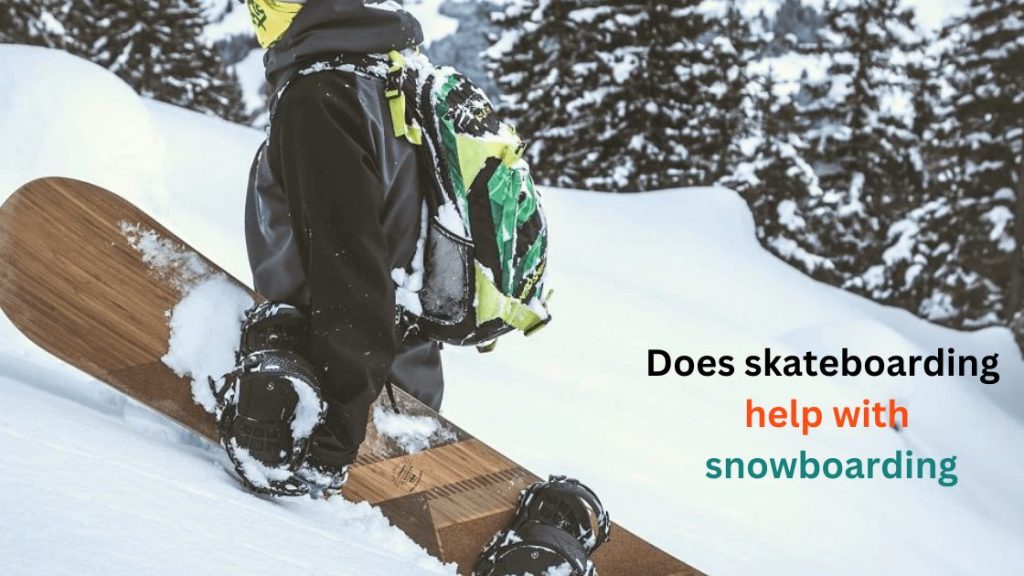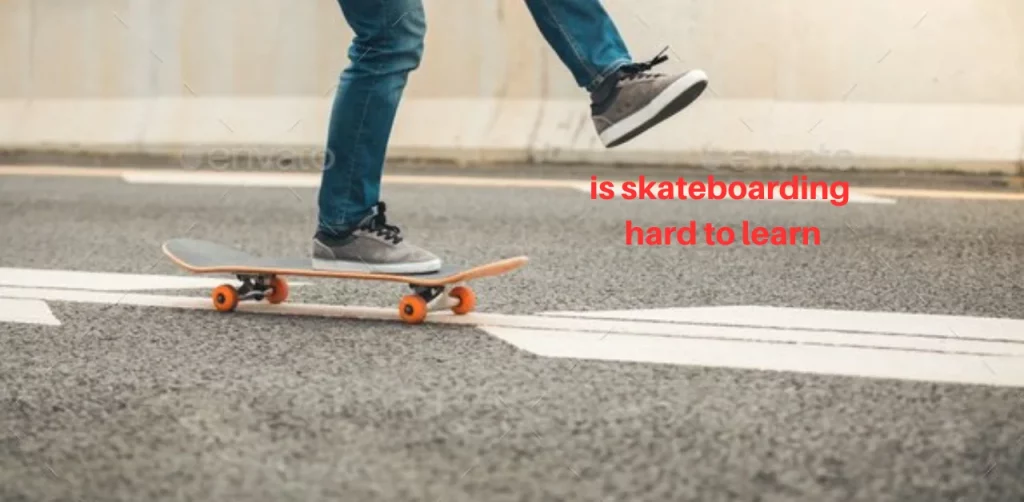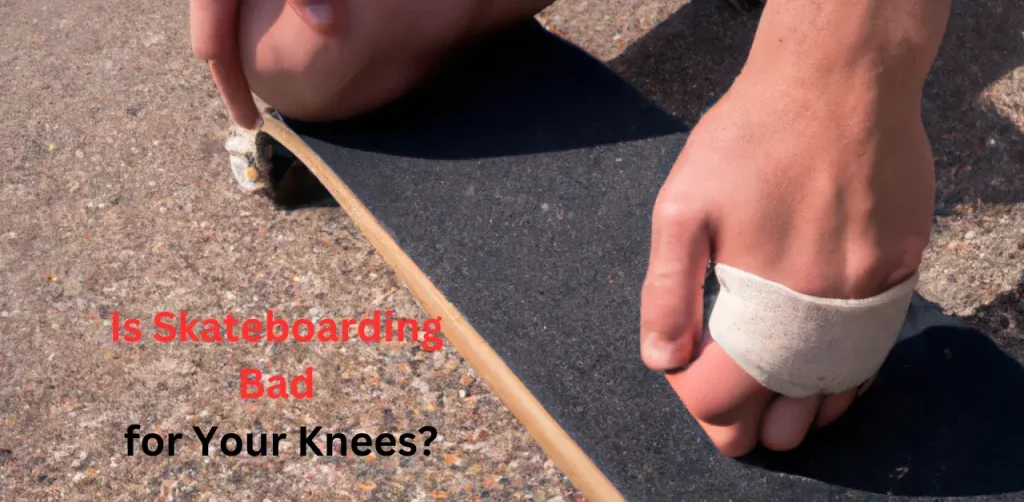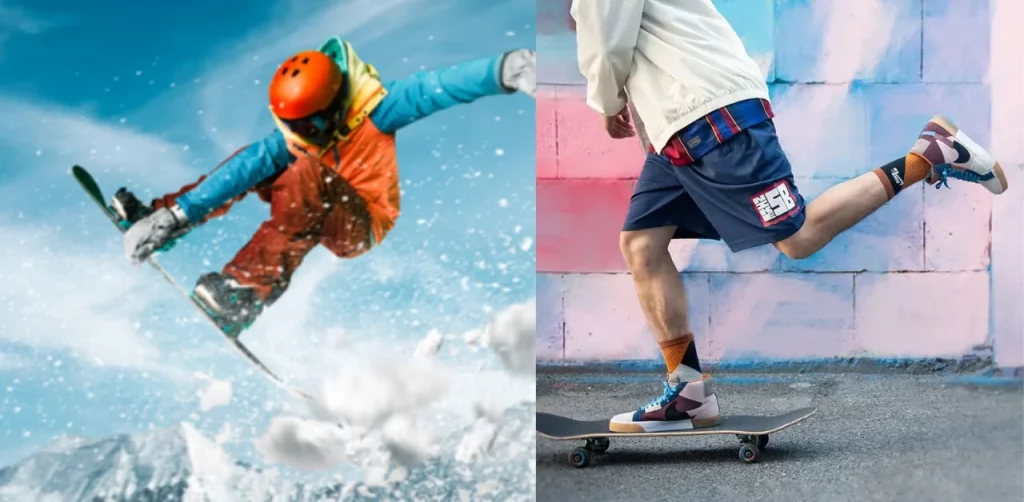If you’ve never skied or snowboarded before, start on easier slopes and work your way up as you gain confidence. For this outdoor activity, all you need is some appropriate clothing, a few snacks, and a safety helmet.
Having done skateboarding for a while and planning to jump into snowboarding, we have good news for you. Although skateboarding is technically different from snowboarding, it may help you learn snowboarding faster and smarter.
In skateboarding, your feet are free, and you ride on concrete, while in the latter, your feet are tied, the surface is snow, and tricks are versatile.
As we’ve all witnessed: the novices with no prior riding experience climb to the top of a difficult slope only to crash to the ground.
How does skateboarding help in snowboarding?
So, just because you’re an excellent skateboarder doesn’t mean you’ll also be a good snowboarder. Although, it’s a fantastic board game to master and cross-train for both sporting events.
But, listen up, skaters—despite the fact the two sports are unquestionably similar, they also differ significantly in many important ways. Remember that practice makes a man perfect, so before you master the game, you’ll need to spend just as much time on the hillsides as you did on your skateboard.
Now the question arises, does skateboarding help with snowboarding?
Yes, it does! Skateboarding is a fantastic off-snowboard sport, and many of the skills you pick up will definitely help you in snowboarding as well, especially in the freestyle department.
In fact, nearly half of professional snowboarders are also skateboarders.
HOW DO YOU SNOWBOARD?
Let’s take a step back and define snowboarding clearly before we get started. Even though you may have skateboarded or even tried skiing, snowboarding is a completely different sport.
Snowboarding involves climbing to a hill’s summit and then descending, just like skiing. With boots and headers, the board is directly connected to your feet. Therefore, there are some particular difficulties that are probably unfamiliar to skateboarders. For instance, when you are in the lift line, your front foot is still restrained while your back foot is free.
If you’re good at skateboarding, does that mean you can do snowboarding as well?
If you are already proficient in skateboarding, learning to snowboard is much simpler.
When snowboarding, skateboarding abilities are applicable and adaptable. Skateboarding is more complex than snowboarding since you have to buckle your feet to the board. But skateboarders benefit from a shorter learning curve as a result of their ability to progress more quickly.
In contrast, while snowboarding, the obvious assumption is that you want to move smoothly while going downhill. And skating up a slope is exactly how you learn that. Although there are some differences, for instance, you don’t always force the snowboard forward, your stances and basic movements, along with some tricks, are the same in both situations.
Considering that, you might ask, “How simple is snowboarding if I can skateboard?”
Even though not everyone can participate in both sports, the fundamental skills are the same for both. If you already have experience in either of the two, preferably skateboarding, your transition will go much more smoothly during snowboarding.
Does snowboarding feel like skateboarding?
Some similarities between these two are as follows:
Tricks
The tricks used on skateboards and snowboards are very similar. Snowboarding borrows many of its techniques from skateboarding, so even though they possess wheels on the bottom of their boards, many trick executions are very similar.
Although there are some differences in how we approach using our upper edge when snowboarding. Skills like twirling, rail and box tricks, and managing pressure on leaps and downhill skis are all comparable and will help you ride your snowboard.
Both sports can benefit from mastering techniques like widening your legs in slopestyle to accelerate or rotating your arms and shoulders to jump on and off boxes.
Before you begin snowboarding, you can ride on a skateboard, and it will help you in the freestyle department. More snowboarding-related skills will become apparent as your skateboarding skills improve.
Switch-boarding
Freestyle skateboarding has the advantage of simply forcing you to switch rides at mini slopes and parkades. It also helps you get used to the feeling of performing switching moves while snowboarding.
Stability and flexibility
Needless to say, skateboarding will require many of the same flexibility and stability muscles that you use for snowboarding.
Your ability to shift your weight and make minute adjustments to your balance while a few specific muscles control snowboarding.
The problem is that when you’re not snowboarding, those muscle fibers aren’t used. Skateboarding is a good way to keep those flexible muscles active because it’s one of the few activities besides yoga ball and stability ball workouts that target those muscles.
Skateboarding is, in the end, also a great deal of fun. However, learning to skateboard takes a little longer than learning to snowboard at first. But if you enjoy snowboarding, you probably will also enjoy learning to skateboard.
Comparison between Snowboarding and Skateboarding
- The fact that starting out on a snowboard is usually much safer than starting out on a skateboard. Skateboarding causes you to fall and hit the ground hard, which makes it relatively easy to get hurt. The certainty of snow, however, is much greater. But a snowboard’s only drawback is that you can’t just jump off from one. You are forced to beef it up if you start losing control after going too fast.
- On a skateboard, as opposed to a snowboard, ollies are completely different. Snowboarding keeps your toes locked in with boots and straps, whereas skateboarding necessitates much footwork.
- Also, a snowboard’s posture and a skateboard are unquestionably different. Depending on what you’re trying to accomplish when skating, your position will change. Once you build your snowboarding, you establish your posture.
- Another major adjustment you’ll need to make when switching between these two is the speed, which is much faster on a snowboard. If you’ve more experience with longboarding, snowboarding will be simpler for you.
- Considering the size is yet another important factor. Size is important when snowboarding, but skateboard sizes are a matter of individual preference. If you wish to stay afloat while riding, get a bigger board. But if you want to perform tricks and slopestyle in playgrounds, get a smaller board. As we all know, snow is less painful than concrete.
Remember!
It’s a bit harder to learn to ride a snowboard; Therefore, practice first.
It’s simpler to learn to ride a skateboard than it is to push or simply cruise around. Once you understand how stability works, the steering requires only a slight shifting of your weight and little pressure on your feet. Compared to skating, snowboarding requires a little more skill. As you can easily go too fast and lose control.
When learning, you can frequently experience a smash if your snowboard’s edge gets stuck. Despite being a little softer than concrete, snow still hurts.
RISK FACTORS
Which sport is riskier, snowboarding or skateboarding?
Which is more dangerous?
It all depends on what you do on your boards. Both skateboards and snowboards can cause injury if you perform risky tricks and jumps.
Skateboarding is most likely to be more dangerous due to pavement’s greater hardness and lack of forgiving qualities than snow. Because there is a higher chance that you will break a bone or spine or scrape off some skin if you fall on pavement or concrete.
ANOTHER RISK:
Nowadays, the majority of snowboarders wear helmets to prevent head injuries. Skateboarders typically don’t wear helmets. Therefore, skateboarders are again at a higher risk.
When snowboarders fall forward while holding their hands in front to shield their face and head, they risk breaking their wrists.
But if we compare it with snow, it tends to be softer than pavement.
Another danger snowboarders are more likely to encounter than skateboarders is the risk associated with riding hilly inclines, especially when riding slopes. But most intermediate and beginner riders will never find themselves in such a situation. Advanced riders who venture outside of a ski area’s boundaries are the main cause of this kind of danger.
Regardless of the risk, you will likely appreciate both sports. So, avoid limiting yourself to one.
Conclusion:
You can learn snowboarding quickly with the help of skateboarding without taking any classes. Although learning to ride a snowboard is a little more challenging, mastering tricks can make it simpler.
For those who have trouble learning independently, joining a snowboarding club or practicing skateboarding can help them learn more easily. Even if you are a skilled skater, you should try out a board before making a purchase decision. After all, practice makes a man perfect.
FREQUENTLY ASKED QUESTIONS:
Do you automatically be able to snowboard if you can skateboard?
Snowboarding is undoubtedly simpler if you’ve skated before, but we’re not sure about “automatically” as everything takes time.
Is snowboarding simply if you can longboard?
The answer is yes; it’s incredibly simple. Without the bindings, longboarding is very similar to snowboarding. These are quite similar, as are the turning methods. The muscles required for the sport, the moves, and other associated activities are quite similar.
How long does snowboarding take?
Learning the fundamentals of snowboarding can take anywhere between one day to the rest of the season, depending on your fitness level and individual skill. Kids, teenagers, and adults usually take a week or less to learn how to snowboard.

“Welcome to our website, Here You’ll find a wealth of information on finding the right skating gear that will last for years to come, as well as tips and tricks to help you improve your skills. Whether you’re a beginner or an experienced skater, you’ll find something of value here.”



